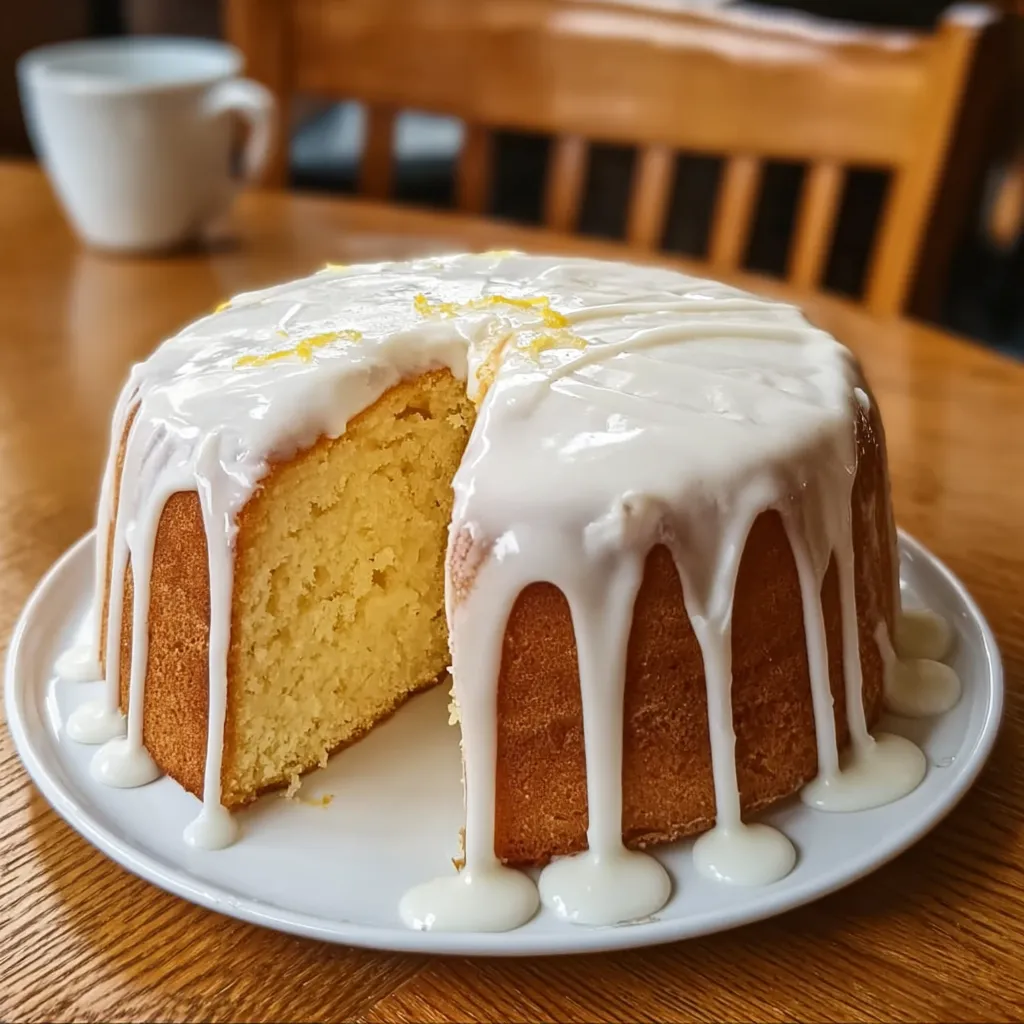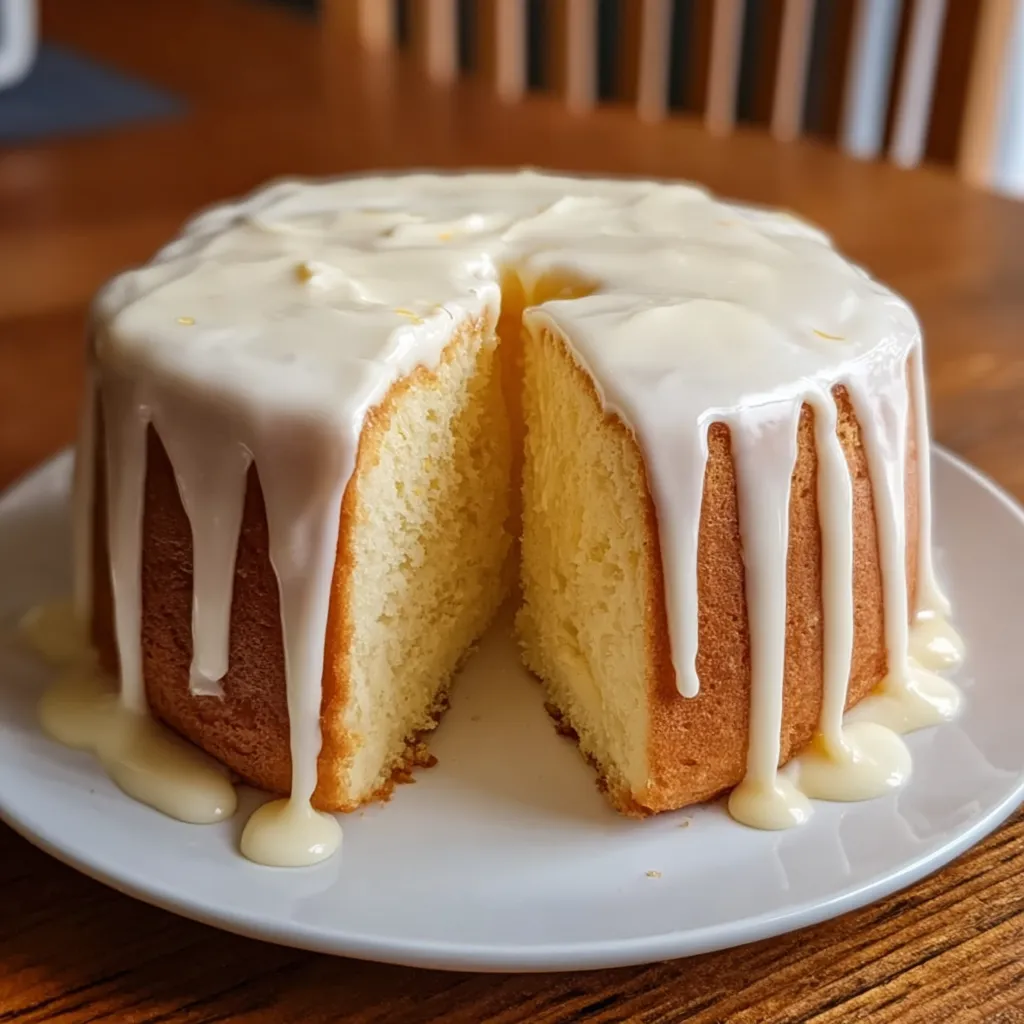 Save
Save
The first time I tasted this cream cheese pound cake, it was at a friend's family gathering. The cake’s rich, buttery crumb paired with the tangy-sweet glaze wrapped in that delicate vanilla aroma instantly convinced me this wasn’t just any ordinary pound cake — it was a slice of pure comfort. Since then, it’s been my go-to when I want something nostalgic yet wonderfully elegant.
I first stumbled upon adding cream cheese to a pound cake recipe after a baking class where the instructor swore by it for creating a cake that stays fresh longer and feels luxuriously dense without drying out. That tip transformed how I approach rich cakes forever.
Essential Ingredients
- Unsalted butter: 2 cups, softened – The backbone of richness; choose European-style for extra creaminess
- Granulated sugar: 3 cups – Proper creaming with butter relies on precise sugar quantities
- Large eggs: 6, room temperature – Adds structure and helps emulsify; warming them first makes for a smoother batter
- All-purpose flour: 3 cups – Balances tenderness and holds cake shape; sifted for aeration
- Cream cheese: Integrated in the batter, implied though not listed, likely contributing to a moist crumb – If using, opt for full-fat for that lush texture
- Heavy cream: 1 cup – Provides moisture and subtle richness without weighing down
- Vanilla extract or a mix with almond: 2 tsp – Adds aromatic warmth; pure extracts always win here
- Baking powder and salt: ½ tsp each – Give lift and balance sweetness
- Milk or heavy cream for the glaze: 3-4 tbsp – Keeps the glaze smooth and pourable
- Powdered sugar for the glaze: 1½ cups – The sweet finishing touch
Essential Ingredients
Shop for butter wrapped in parchment and choose sugar with fine crystals that dissolve quickly. Fresh eggs at room temperature can be pre-warmed by sitting in a bowl of warm water for 10 minutes. And never underestimate the difference real vanilla extract makes—it elevates every bite.
Cooking Process
- Preparing the Batter:
- Cream butter and sugar until pale and fluffy; this step traps air that leads to a lighter crumb.
- Incorporating Eggs:
- Add eggs one by one, blending well to ensure a uniform, stable mixture that won’t curdle.
- Combining Dry and Wet Ingredients:
- Alternate flour and heavy cream additions; this delicate balance avoids overmixing, which keeps the cake tender.
- Baking in a Bundt Pan:
- The pan’s shape encourages even heat circulation, giving the cake a beautiful crust and moist center.
- Cooling and Glazing:
- Let the cake sit briefly before inverting to keep its shape intact. The silky glaze adds just the right touch of sweetness and shine.

Recipe Highlights
- Butter and cream cheese deliver satisfying fats that keep you full and make every mouthful satisfyingly rich
- The cake’s dense yet tender crumb makes it perfect for slicing thick or thin, ideal with coffee or as a dessert base
- My favorite twist is swapping half the vanilla extract for almond; it brings a nutty warmth that feels like a gentle holiday hug
Once, I mistakenly baked the cake at 350°F instead of 325°F. The exterior browned too quickly while the center stayed underdone. It taught me to trust low and slow for a cake this rich.
Make-Ahead Strategies
This cake actually tastes better the next day after chilling wrapped tightly—flavors meld and the crumb firms nicely without drying out. You can even freeze slices wrapped in parchment; thaw them gently in the fridge overnight before glazing.
Flavor Variations
- Swap half the vanilla with lemon zest and juice for a bright, citrus twist
- Fold in ½ cup chopped toasted pecans or dried cherries into the batter to add texture and surprise
- For a mocha version, swirl in 2 tbsp instant espresso granules dissolved in the cream
Kitchen Tool Recommendations
- Stand mixer with paddle attachment for effortless creaming and mixing
- A quality non-stick or well-seasoned bundt pan ensures easy release and a picture-perfect shape
- Sifter for flour and powdered sugar to avoid lumps and keep batter delicate
Cooking Secrets
- Don’t rush creaming the butter and sugar; it’s the silent magic that makes the crumb featherlight
- Always bring eggs and cream to room temperature; cold ingredients resist folding in and cause clumps
- Cool the cake in the pan for 15 minutes—too soon and it breaks apart, too long and it sticks stubbornly

Frequently Asked Recipe Questions
- → What gives this pound cake its moist texture?
The combination of softened butter, cream cheese, and heavy cream creates a rich, moist texture while the creaming process introduces air for a tender crumb.
- → Can I use other extracts besides vanilla?
Yes, almond extract or a mix of vanilla and almond extracts work well to add a subtle nutty flavor without overpowering the cake.
- → How do I know when the cake is perfectly baked?
Insert a toothpick into the center; if it comes out clean or with a few moist crumbs, the pound cake is done baking.
- → Why is it important to add eggs one at a time?
Adding eggs slowly helps maintain a smooth batter, ensuring the cake develops a light, even texture without curdling.
- → How can I adjust the glaze thickness?
Add more powdered sugar to thicken or a bit more milk or cream to thin the glaze, depending on your desired consistency.
